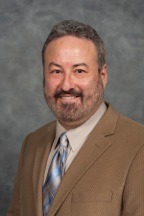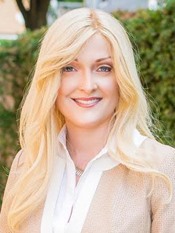Program Information
Revitalizing Your Medical Physics Classroom: Some Examples and Thoughts from the Trenches

V Montemayor
R Howell
S Naqvi
J Burmeister
V Montemayor
V Montemayor1*, R Howell2*, S Naqvi3*, J Burmeister4*, (1) Germantown Academy, Fort Washington, PA, (2) UT MD Anderson Cancer Center, Houston, TX, (3) Saint Agnes Cancer Institute, Baltimore, MD, (4) Wayne State University School of Medicine, Detroit, MI
Presentations
9:30 AM : Introduction - V Montemayor, Presenting Author9:40 AM : Making the Most of a One Hour Lecture with Alternative Teaching Methodologies: Implementing Project-based and Flipped Learning - R Howell, Presenting Author
10:00 AM : Creative Simulation: A Flexible Hands-on Approach to Building a Deeper Understanding of Critical Concepts in Radiation Physics - S Naqvi, Presenting Author
10:20 AM : Incorporating Active Learning Into Medical Physics Education - J Burmeister, Presenting Author
10:40 AM : Panel Discussion - V Montemayor, Presenting Author
SU-A-BRA-0 (Sunday, July 31, 2016) 9:30 AM - 11:00 AM Room: Ballroom A
Moderator – Vic Montemayor
No one has been more passionate about improving the quality and effectiveness of the teaching of Medical Physics than Bill Hendee. In was in August of 2008 that the first AAPM Workshop on Becoming a Better Teacher of Medical Physics was held, organized and run by Bill Hendee. This was followed up in July of 2010 with a summer school on the same topic, again organized by Bill.
There has been continued interest in alternate approaches to teaching medical physics since those initial gatherings. The momentum established by these workshops is made clear each year in the annual Innovation in Medical Physics Education session, which highlights work being done in all forms of medical physics education, from one-on-one residencies or classroom presentations to large-scale program revisions and on-line resources for international audiences.
This symposium, presented on behalf of the Education Council, highlights the work of three finalists from past Innovation in Education sessions. Each will be presenting their approaches to and innovations in teaching medical physics. It is hoped that audience members interested in trying something new in their teaching of medical physics will find some of these ideas and approaches readily applicable to their own classrooms.
Speaker 1: Rebecca Howell
The presentation will discuss ways to maximize classroom learning, i.e., increasing the amount of material covered while also enhancing students’ understanding of the broader implications of the course topics. Specifically, the presentation will focus on two teaching methodologies, project based learning and flip learning. These teaching methods will be illustrated using an example of graduate medical physics course where both are used in conjunction with traditional lectures. Additionally, the presentation will focus on our experience implementing these methods including challenges that were overcome.
Speaker 2: Jay Burmeister
My presentation will discuss the incorporation of active learning techniques into a traditional medical physics classroom course. I will describe these techniques and how they were implemented as well as student performance before and after implementation. Student feedback indicated that these course changes improved their ability to actively assimilate the course content, thus improving their understanding of the material.
Speaker 3: Shahid Naqvi
My talk will focus on ways to help students visualize crucial concepts that lie at the core of radiation physics. Although particle tracks generated by Monte Carlo simulations have served as an indispensable visualization tool, students often struggle to resolve the underlying physics from a simultaneous jumble of tracks. We can clarify the physics by “coding” the tracks, e.g., by coloring the tracks according to their “starting” or “crossing” regions. The regionally-coded tracks when overlaid with dose distributions help the students see the elusive connection between dose, kerma and electronic disequilibrium. Tracks coded according to local energy or energy-loss rate can illustrate the need for stopping power corrections in electron beams and explain the Bragg peak in a proton beam. Coding tracks according to parent interaction type and order can clarify the often misunderstood distinction between primary and scatter dose. The students can thus see the "whole" simultaneously with the "sum of the parts," which enhances their physical insight and creates a sustainable foundation for further learning.
Moderator – Vic Montemayor
After the presentations the speakers and moderator will be open to questions and discussion with the audience members.
Learning Objectives:
1. Be able to explain Project-Based Learning and how can it be incorporated into a Medical Physics classroom.
2. Be able to explain Flipped Learning and how can it be incorporated into a Medical Physics classroom.
3. Be able to explain active-learning strategies for the teaching of Medical Physics.
4. Be able to explain how Monte Carlo simulations can be used to deepen a student’s understanding of radiation physics and dosimetry.
Handouts
- 115-31568-385514-119253.pdf (V Montemayor)
- 115-31569-385514-118667.pdf (R Howell)
- 115-31570-385514-119254.pdf (S Naqvi)
- 115-31571-385514-118553.pdf (J Burmeister)
Contact Email:





